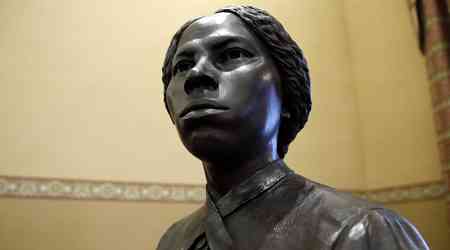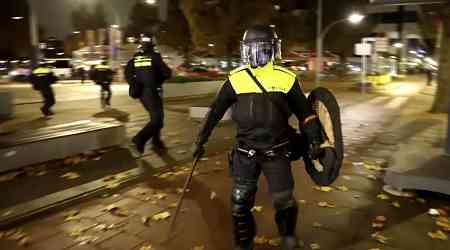
This article is part of The D.C. Brief, TIME’s politics newsletter. Sign up here to get stories like this sent to your inbox.
Mark Kampf was determined to count the ballots by hand, lawsuit after lawsuit against him be damned. The year was 2022 and Kampf was the newly elected county clerk for Nye County, Nev., after campaigning on a platform that included adherence to the lie that the last presidential election had been stolen from Donald Trump. In Kampf’s mind, running a clean election meant not trusting the process used in 2020. So instead of using machines, Kampf was going to hand count 20,000 ballots in a week.
[time-brightcove not-tgx=”true”]After two weeks of court battles that stretched past Election Day, Kampf finally had the go ahead to launch his team of hundreds of volunteers—mostly older residents who had the time to go through the arduous task of tabulating the results. They got through 2,500 ballots on that first day. But despite working in groups of three, as many as a quarter of the ballots had to be read a second time because of obvious errors.
Eventually, Kampf resorted to machines to complete the official count. Nye County’s folly is just one example of a pattern that is remarkably consistent: outside of the tiniest jurisdictions, hand counting is hard, slow, expensive, and highly unreliable. And if Kampf’s count of 1-in-4 ballots being read incorrectly is accurate, he actually did better than most. A study from Rice University estimated that hand counts got the results right just 58% of the time. Machine-based voting has an error rate of less than 1%, according to two decades of research.
And yet, if this election brings about anything akin to the chaos we saw after Election Day 2020, hand counting might be a major culprit. Despite all the evidence against the practice, Georgia’s top elections board is plowing ahead with a scheme to count by hand every ballot in a state of more than 8 million registered voters.
The frankly ludicrous decision came about after the five-person board found itself overrun by election deniers. The boneheaded move has drawn bipartisan criticism, including Vice President Kamala Harris and Republican Georgia Gov. Brian Kemp.
This is exactly why Democrats on Sept. 30 filed a lawsuit to block this potential folly. It’s got a good chance to proceed, as even Georgia’s Republican Secretary of State says the election board waited too long to institute such a dramatic change of rules.
While shutting down Georgia’s hand count plan could spur conspiracy theories that the vote is rigged, keeping it in place could do even more damage to trust in the state’s elections. Despite right-wing conspiracy theories about inaccurate voting machines and a desire to go back to paper-and-ink ballots, the perils of hacking or tinkering are just not justified. Fueled by disinformation and sheer cynicism, Trump’s belief that the 2020 election was stolen simply has no basis in fact.
Those pesky facts have not stopped the push at all levels of government to go back to yesteryear. Legislators and elected officials, recognizing their jobs are always in peril if they seem to ignore constituents, have humored to varying degrees this camp. Typically, though, they have found ways to illustrate why machines are a quicker, cheaper, and more accurate way to getting the right results on the right timeline.
To be fair, hand counting still works in small jurisdictions. In New Hampshire, 114 towns still count by hand—or roughly 10% of the state’s voters. Those are typical of the smaller places where this style is popular: mostly single-precinct municipalities. Nationwide, fewer than 0.2% of Americans live in such places as most voters live in communities where such small-bore efforts make no sense as a practical matter.
But consider the scale needed on ballots with loads of questions and races. In 2020, Cobb County, Ga., ordered a hand count of just the presidential votes. It took hundreds of people five full days to get through a little fewer than 400,000 ballots. What Georgia is asking for now is for tallying every single ballot line—White House contenders, state-level races, questions about taxes, the creation of a state tax court, even who would sit on the local soil and water board. In Fulton County alone, a sample ballot this year includes more than 50 possible races. More than a half-million votes were cast there in 2020. Statewide, we’re now talking about a universe of about 5 million anticipated ballots.
“To roll something like this out at the last minute seems like a really, really terrible idea,” says Gowri Ramachandran, director of Elections and Security in the Brennan Center’s Elections and Government, which focuses on improving elections. “It’s really hard for me to understand what benefit anyone thinks that’s adding.”
We have to go all the way back to 2004 to find an election year in which even 1% of the nation’s votes were ballots hand counted, reports MIT’s Election Lab. Two decades later, more than 90% of jurisdictions use electronic counting exclusively. There’s a reason this method has been shelved everywhere except one-stoplight towns.
Consider these warning signs from other states:
- Officials in Mohave County, Ariz., decided against hand-counting ballots for this year after the elections chief ran a trial run last year with just 850 ballots. A team of seven people took three, eight-hour days to complete the work and still had 46 errors. That 5% error rate was better than most, but it was still dramatically higher than what machines yielded, and expanding to a full election year would have cost an extra $1 million, including 245 new workers.
- When Shasta County, Calif., considered moving to a hand count last year, the county clerk calculated the costs at millions of dollars, including $1 million just for new equipment—essentially really good calculators—and 375 extra staffers. But the county nonetheless is moving ahead with it, and even recently hired a newcomer with zero experience to take over as elections chief, prompting statewide fears of a fiasco next month if Shasta County’s count takes too long or isn’t trusted.
Social psychologists, voting experts, and mathematicians alike have all uniformly said machines still do better than humans with repetitive tasks like counting ballots. Not only do machines count at a far cheaper rate, they are faster and just plain better at it.
Back in Nye County, Nev., after Kampf, the election chief, resorted to machine counting ballots in 2022, he told reporters the hand count had merely been a test and a safeguard. By the time preparations for this year’s counting began, he decided on another option: he resigned, effective on March 31.
Make sense of what matters in Washington. Sign up for the D.C. Brief newsletter.































